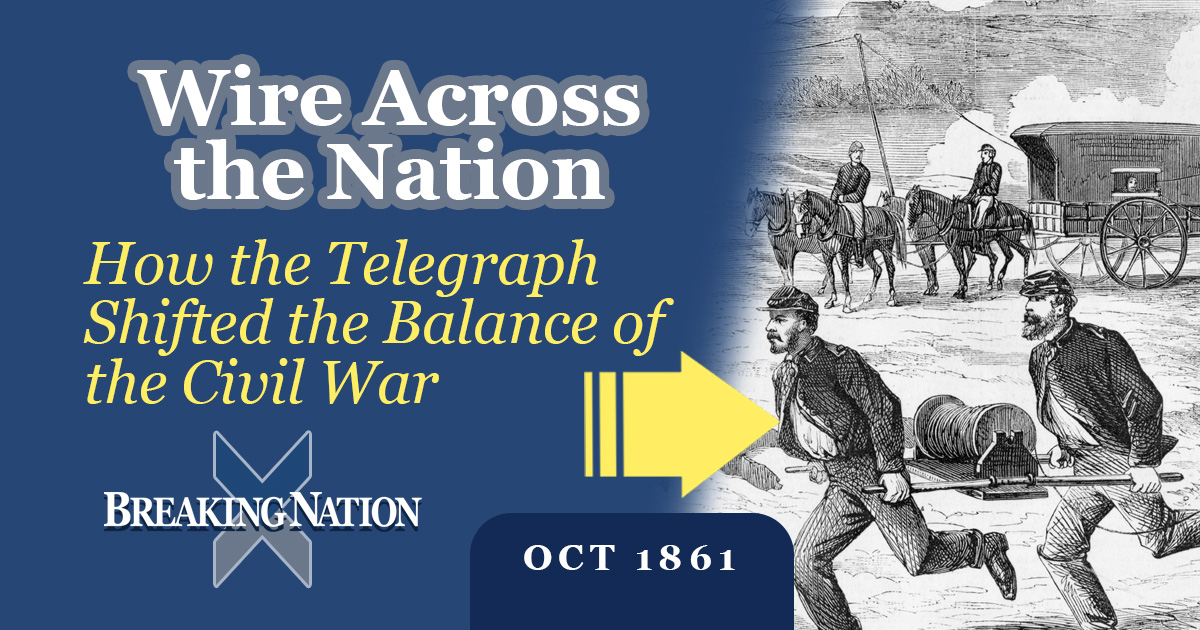Connecting a Continent: How the Telegraph Shaped the Civil War

On October 24, 1861, the completion of the Transcontinental Telegraph stitched together the eastern and western halves of the United States with instantaneous communication for the first time. Coming just six months into the Civil War, this achievement carried enormous strategic and symbolic significance. It was more than a technical marvel; it was a national lifeline at a moment when the Union’s cohesion seemed fragile.
Before the telegraph, messages between the coasts relied on the Pony Express, which, though romanticized, was slow, costly, and vulnerable to disruption. The war underscored just how inadequate such methods were. With California’s loyalty in question—its wealth in gold and strategic position making it a coveted prize for both Union and Confederacy—the ability to bind it directly to Washington, D.C. through rapid communication was no small matter. The transcontinental telegraph reassured Union leaders that California could remain politically tethered to the East despite the vast geographical gap.
The telegraph’s military and political value was immediate. President Lincoln and his administration could correspond almost in real time with California officials, reinforcing loyalty and coordinating financial support. California’s gold was vital for backing Union currency and financing the war effort, and the telegraph allowed for quicker financial and logistical decisions. Meanwhile, Confederate sympathizers in the Far West were dealt a symbolic blow: their hopes of exploiting California’s isolation were weakened by the knowledge that the state was now plugged into the Union’s command network.
Equally important was the telegraph’s broader psychological impact. In a conflict defined by questions of union versus disunion, the joining of telegraph wires across the continent became a metaphor for national unity. At a moment when battlefronts and political divisions threatened to tear the republic apart, technology demonstrated that the Union could extend its reach across deserts, mountains, and plains. The nation might be divided by war, but the wire proclaimed that the ideal of “one country” still had tangible force.
Of course, the telegraph also marked the decline of the Pony Express, whose service became obsolete almost overnight. But this too reflected the Civil War’s nature as a modern conflict—one where communication, speed, and information mattered as much as muskets and cannons. In that sense, the transcontinental telegraph was not just a marvel of engineering; it was an essential tool for preserving the Union’s farthest frontiers. The wire humming across the plains carried with it not only messages, but also a reminder that the Union, though under fire, could still bind itself together through progress.
Breaking Nation: A Civil War Podcast explores the American Civil War, its turning points, and our national memory. Discover full episodes, transcripts, and resources at www.breakingnation.com — your destination for in-depth Civil War podcast content and fresh perspectives on America’s past. Listen on Apple Podcasts, Spotify and Amazon Music.




